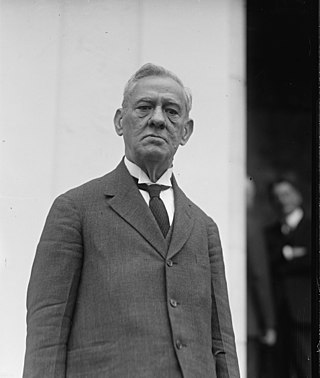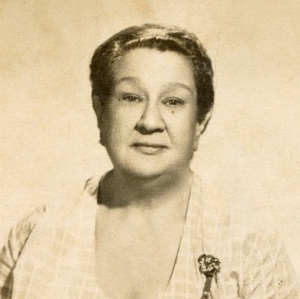Related Research Articles

Flamenco is an art form based on the various folkloric music traditions of southern Spain, developed within the gitano subculture of the region of Andalusia, and also having historical presence in Extremadura and Murcia. In a wider sense, the term is used to refer to a variety of both contemporary and traditional musical styles typical of southern Spain. Flamenco is closely associated to the gitanos of the Romani ethnicity who have contributed significantly to its origination and professionalization. However, its style is uniquely Andalusian and flamenco artists have historically included Spaniards of both gitano and non-gitano heritage.

Paco Peña is a Spanish flamenco composer and guitarist. He is regarded as one of the world's foremost traditional flamenco players.
Guajira[ɡwaˈxi.ɾa] is a music genre derived from the punto cubano. According to some specialists, the punto cubano was known in Spain since the 18th century, where it was called "punto de La Habana", and by the second half of the 19th century it was adopted by the incipient Spanish Flamenco style, which included it within its "palos" with the name of guajira. Guajira was utilized by Spanish Zarzuela composers, such as Ruperto Chapí, who included it in his well known play "La Revoltosa", from 1897. Two years later, in 1899, the Cuban composer Jorge Anckermann inaugurated a new genre with his song "El arroyo que murmura", the first Cuban guajira. This song became a model that was adopted by many other Cuban composers at a later time, and was frequently included in the Cuban Zarzuela and vernacular theater.

Alfredo de Zayas y Alfonso, usually known as Alfredo de Zayas under Spanish naming customs and also known as Alfredo Zayas, was a Cuban lawyer, poet and political figure. He served as prosecutor, judge, mayor of Havana, secretary of the Constitutional Convention, Senator in 1905, president of the Senate in 1906, Vice President of Cuba from 1909 to 1913 and President of Cuba from May 20, 1921, to May 20, 1925.
In flamenco a tango is one of the flamenco palos closely related in form and feeling to the rumba flamenca. It is often performed as a finale to a flamenco tiento. Its compás and llamada are the same as that of the farruca and share the farruca's lively nature. However, the tango is normally performed in the A Phrygian mode. In some English sources the flamenco tango is written with an -s; "the tangos is..."
The guaracha is a genre of music that originated in Cuba, of rapid tempo and comic or picaresque lyrics. The word had been used in this sense at least since the late 18th and early 19th century. Guarachas were played and sung in musical theatres and in working-class dance salons. They became an integral part of bufo comic theatre in the mid-19th century. During the later 19th and the early 20th century the guaracha was a favourite musical form in the brothels of Havana. The guaracha survives today in the repertoires of some trova musicians, conjuntos and Cuban-style big bands.
Rumba flamenca, also known as flamenco rumba or simply rumba, is a palo (style) of flamenco music developed in Andalusia, Spain. It is known as one of the cantes de ida y vuelta, music which diverged in the new world, then returned to Spain in a new form. The genre originated in the 19th century in Andalusia, southern Spain, where Cuban music first reached the country.

A palo or cante is the name given in flamenco for the different traditional musical forms.
Cantes de ida y vuelta is a Spanish expression literally meaning roundtrip songs. It refers to a group of flamenco musical forms or palos with diverse musical features, which "travelled back" from Latin America as styles that, having originated in the interplay between musical traditions of peninsular Spain and those of Latin America, developed into renewed forms that were reintroduced in Spain. Usually they have a more mellow character than the more traditional flamenco songs.

Enrique Morente Cotelo, known as Enrique Morente, was a Spanish flamenco singer and a celebrated figure within the world of contemporary flamenco. After his orthodox beginnings, he plunged into experimentalism, writing new melodies for cante and jamming with musicians of all styles, without renouncing his roots in traditional flamenco singing, which he kept on cultivating despite criticism.
"It hasn't been easy. First came the accusations of corruption of the music, of treachery in his struggle to disfigure what was already perfectly coded. When some albums and some categorical evidence of his knowledge of the classical approach laid these malicious comments bare, then came the most twisted condemnations. That the pace of the compás waned, that he didn't really make you feel and that kind of thing."
This is a glossary of terms that relate to flamenco arts.

Wendy Guerra, formally Wendy Guerra Torres, is a Cuban poet and novelist, based in Miami.

Soleares is one of the most basic forms or palos of Flamenco music, probably originating among the Calé Romani people of Cádiz or Seville in Andalusia, the most southern region of Spain. It is usually accompanied by one guitar only, in phrygian mode "por arriba" ; "Bulerías por soleá" is usually played "por medio". Soleares is sometimes called "mother of palos" although it is not the oldest one and not even related to every other palo

Rafael Riqueni del Canto, is a Spanish guitar player and composer. He is considered as one of the biggest names or “Maestros” in flamenco guitar history. At age fourteen, he won the two main national awards for flamenco guitar in Spain. As an adult, he has won the most prestigious flamenco music awards in Spain, including: Premio Andalucía de Cultura, Premio Nacional de la Crítica, Giraldillo a la Maestría de la XVIII Bienal de Flamenco y el Premio AIE. In 2017, he was awarded with XXXI Compás del Cante, this award is always referred to by the Spanish media as the "Flamenco Nobel prize".

Renée Méndez Capote y Chaple, also known by the pseudonyms Io-san, Berenguela, and Suzanne, was a Cuban writer, essayist, journalist, translator, suffragist, and feminist activist. She worked in children's literature, short stories, essays, and biographies.
Tientos is a flamenco Andalusian palo which has a rhythm consisting of 4 beats. It is in the same family as the Tangos, but slower and with different topics, lyrics and mood. Every Tientos becomes a Tangos at the end of the song/dance. Traditionally, cantaor El Marrurro has been considered one of the creators of this style. Enrique el Mellizo gave it the modern form by which we know it today. Other famous cantaores who interpreted this style were Antonio Chacón and Pastora Pavón.
Soleá (Soleares) por Bulerías is a flamenco palo. This dance is the product of the intensification of the Soleá rhythm or the deceleration of the Bulería. This cante is an intermediate step between the Soleá and the Bulería but responds to the same rhythm of both.
Josefa Díaz Fernández, popularly known as Pepa de Oro,, was a Spanish flamenco dancer and singer.

María Isabel Díaz Lago is a Cuban actress. A graduate of the Instituto Superior de Arte, her first film role was in Una novia para David. She became the first Cuban "Almodóvar girl", appearing in the 2006 film Volver. On the small screen, she is best known for her role as Soledad "Sole" Núñez Hurtado on Locked Up. She has resided in Spain since 1996.

María Juncal is a Spanish flamenco dancer who has toured in Belgium, Canada, China, Cuba, France, Germany, Greece, Holland, Israel, Italy, Japan, Mexico, Spain, the U.S., and Venezuela. She has participated in different shows such as Jarocho under the direction of Richard O'Neal, assistant director of Riverdance, and has collaborated as a choreographer with Spain's women's national artistic gymnastics team, 2012. In addition to receiving the Excelencias Cuba Award 2018 2018 for her work in developing Cuban flamenco art, and winning the Antonio Gades National Award of Flamenco Dance, she was voted the best flamenco dancer at the Festival Del Cante De Las Minas.
References
- ↑ www.flamenco-events.com. "Flamenco-Events Palos et compas de G à P". www.flamenco-events.com. Retrieved 2018-01-30.
- ↑ "¿Qué es una guajira? – Gracia Flamenca". graciaflamenca.es (in European Spanish). Retrieved 2018-03-29.
- 1 2 "Guajiras | Flamencopolis". www.flamencopolis.com (in European Spanish). Retrieved 2018-03-29.
- ↑ "Guajiras | Flamencopolis". www.flamencopolis.com (in European Spanish). Retrieved 2018-01-29.
- 1 2 "Learn About Guajira | Ambiente Flamenco". www.ambienteflamenco.com. Retrieved 2018-01-29.
- ↑ "About Guajiras". www.studioflamenco.com. Retrieved 2018-03-29.
- ↑ "Flamencopalos - Guajiras". www.elflamenco.nl. Retrieved 2018-01-29.
- ↑
- ↑ "About Guajiras". www.studioflamenco.com. Retrieved 2018-01-29.
- ↑ "¿Qué es una guajira? – Gracia Flamenca". graciaflamenca.es (in European Spanish). Retrieved 2018-01-29.
- ↑ Ruiz, Luis López (2016-04-20). GUÍA DEL FLAMENCO (in Spanish). Ediciones Akal. ISBN 9788446045373.
- ↑ "Guajiras | Viernes con una Letra". experience flamenco. Retrieved 2018-01-29.
